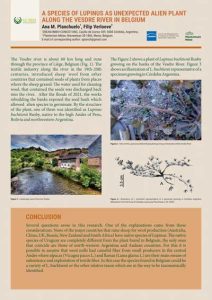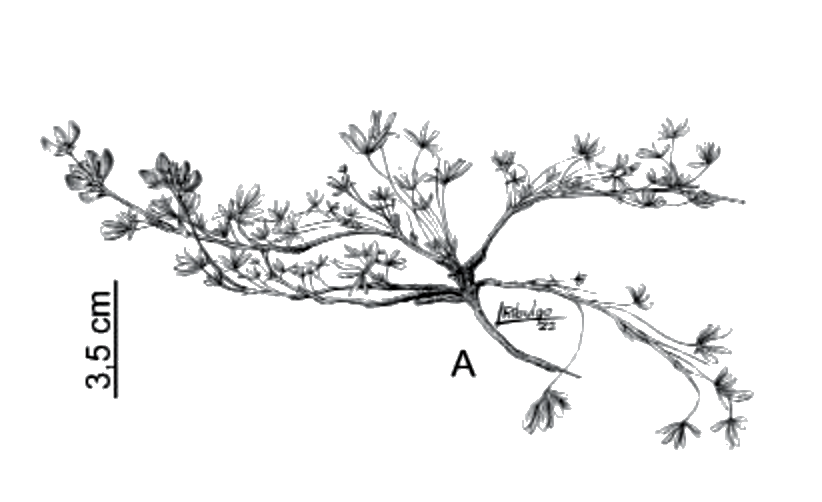
Ana M. Planchuelo1, Filip Verloove2
1CREAN-IMBIV-CONICET-UNC, Casilla de Correo 509, 5000 Córdoba, Argentina;
2 Plantentuin Meise, Nieuwelaan 38-1860, Meise, Belgium.
E-mail of corresponding author: aplanch@gmail.com
The Vesdre river is about 60 km long and runs through the province of Liège, Belgium (Fig. 1). The textile industry along the river in the 19th-20th centuries, introduced sheep 'wool from other countries that contained seeds of plants from places where the sheep grazed. The water used for cleaning wool, that contained the seeds was discharged back into the river. After the floods of 2021, the works rebuilding the banks exposed the seed bank which allowed alien species to germinate. By the structure of the plant, one of them was identified as Lupinus buchtienii Rusby, native to the high Andes of Peru, Bolivia and northwestern Argentina.
The Figure 2 shows a plant of Lupinus buchtienii Rusby growing on the banks of the Vesdre River. Figure 3 shows an illustration of L. buchtienii representative of a specimen growing in Córdoba Argentina.

Figure 3.- Illustration of L. buchtienii representative of a specimen growing in Córdoba Argentina (Illustration from the Flora of Córdoba, Lupinus by Planchuelo, A. M. 2023)
CONCLUSION
Several questions arose in this research. One of the explanations came from these considerations. None of the major countries that raise sheep for wool production (Australia, China, UK, Russia, New Zealand and South Africa) have native species of Lupinus. The native species of Uruguay are completely different from the plant found in Belgium, the only ones that coincide are those of north-western Argentina and Andean countries. For this it is possible to assume that wool mills had camelid fiber from small producers in the central Andes where alpacas (Vicugna pacos L.) and llamas (Lama glama L.) are their main means of subsistence and exploitation of textile fiber. In this case the species found in Belgium could be a variety of L. buchtienii or the other relative taxon which are in the way to be taxonomically identified.


